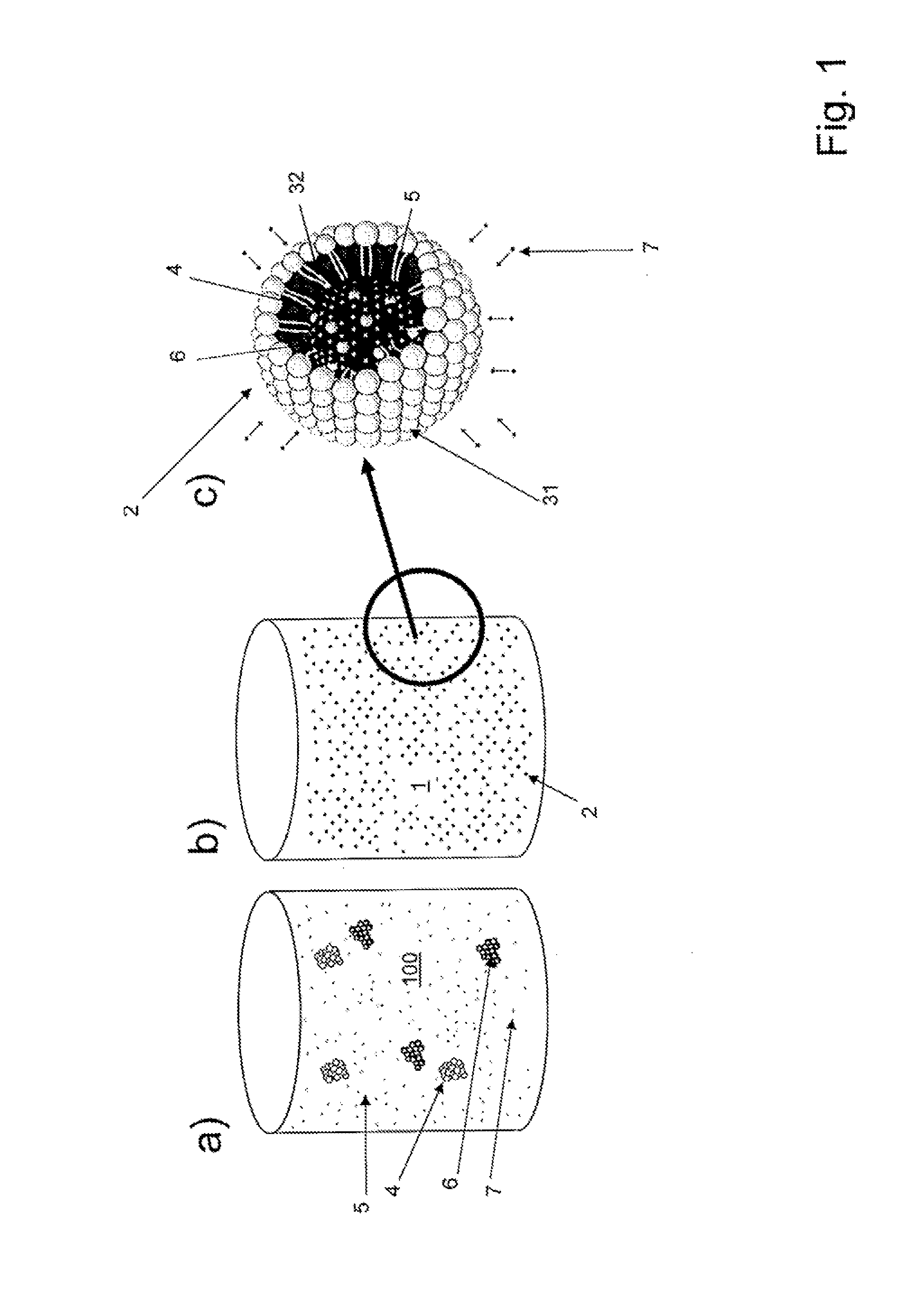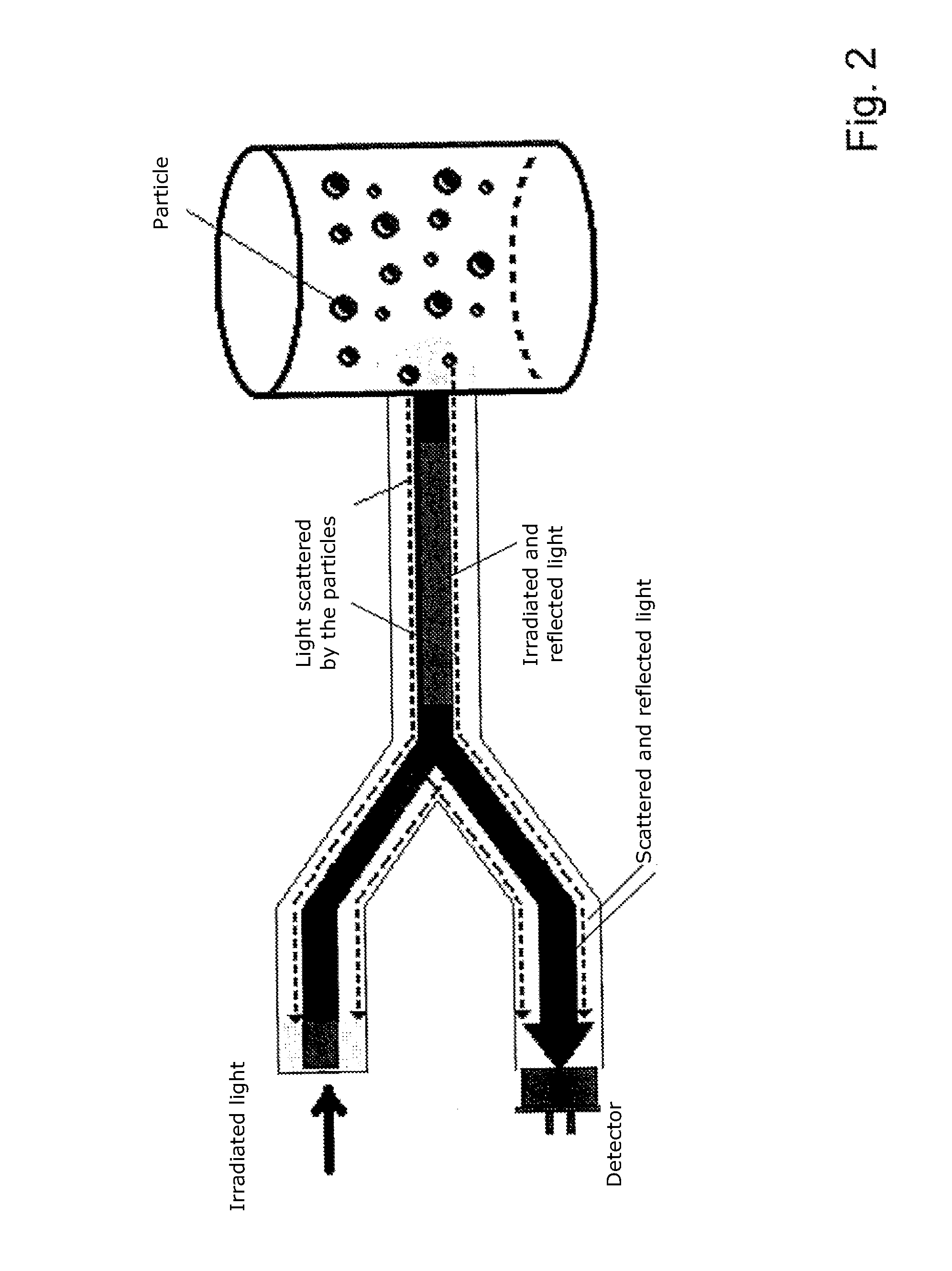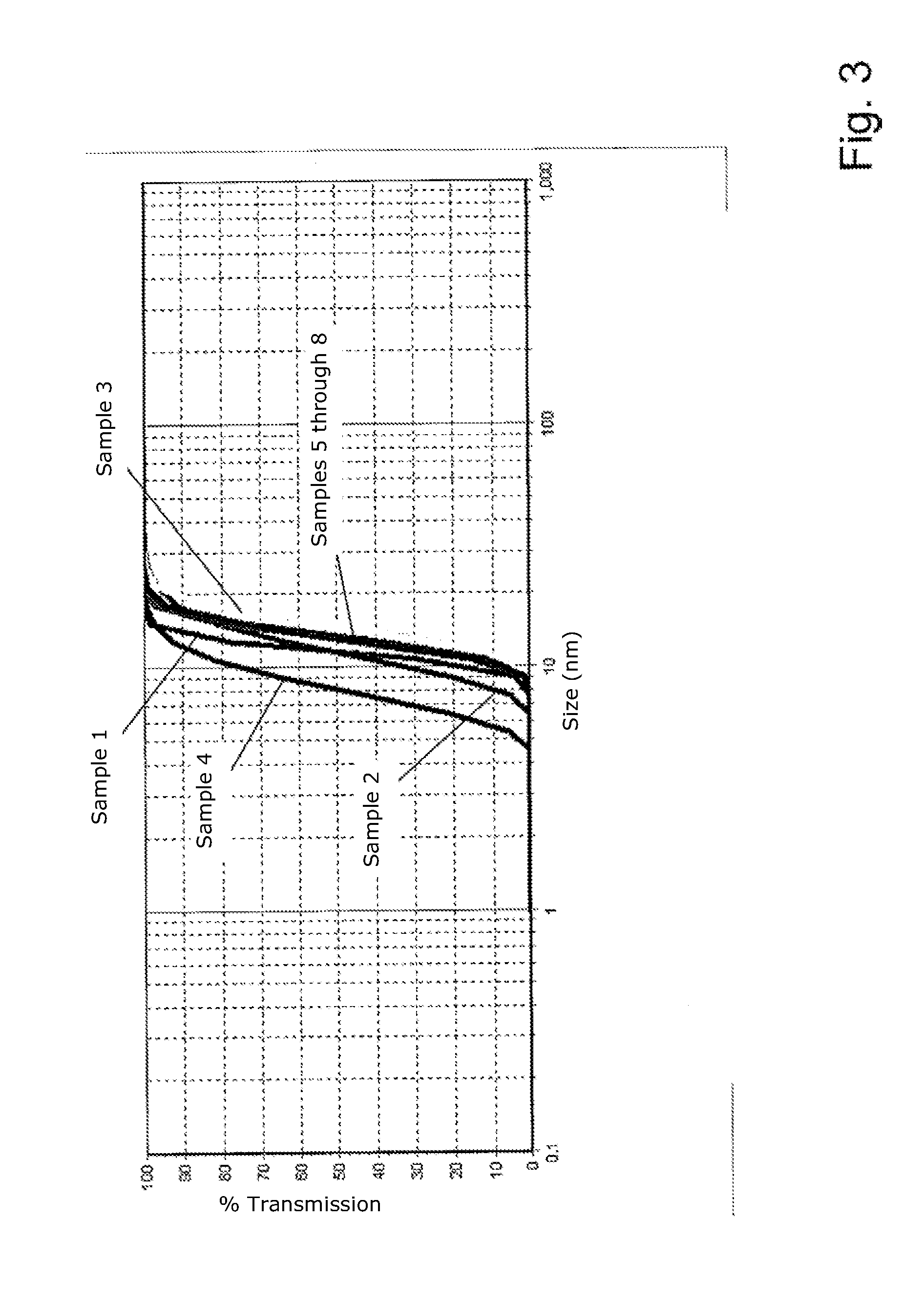Micellarly integrated oxidation protection for natural dyes
a technology of natural dyes and oxidation protection, applied in the field of solubilizate, can solve the problems of oxidation tendency of natural dyes toward oxidation generally being a major problem for users, natural dyes lose their color intensity quickly due to oxidation processes in particular foods,
- Summary
- Abstract
- Description
- Claims
- Application Information
AI Technical Summary
Benefits of technology
Problems solved by technology
Method used
Image
Examples
Embodiment Construction
[0077]In contrast to the solubilizates according to the invention, conventional products which provide natural dyes in water-dispersible form are formulated as emulsions. The distinction between a solubilizate 1 according to the invention having micelles 2, and an emulsion 100 of a dye 4 is explained in FIG. 1, based on a model representation. Ascorbic acid is used as an example of a hydrophilic antioxidant 5, and tocopherol is used as an example of a hydrophobic antioxidant 6.
[0078]In addition to the emulsifier 3, the hydrophilic antioxidant 5 and oxygen 7 are dissolved in the aqueous continuous phase of the emulsion 100. The hydrophobic components of the dye 4 and of the hydrophobic antioxidant 6 are congregated in aggregates or drops. The size of the aggregates or drops is in the range of the wavelength of visible light, so that the emulsion 100 appears turbid to the human eye.
[0079]The aggregates or drops of the hydrophobic antioxidant 6 react with the oxygen 7 only at their sur...
PUM
| Property | Measurement | Unit |
|---|---|---|
| Temperature | aaaaa | aaaaa |
| Temperature | aaaaa | aaaaa |
| Temperature | aaaaa | aaaaa |
Abstract
Description
Claims
Application Information
 Login to View More
Login to View More - R&D
- Intellectual Property
- Life Sciences
- Materials
- Tech Scout
- Unparalleled Data Quality
- Higher Quality Content
- 60% Fewer Hallucinations
Browse by: Latest US Patents, China's latest patents, Technical Efficacy Thesaurus, Application Domain, Technology Topic, Popular Technical Reports.
© 2025 PatSnap. All rights reserved.Legal|Privacy policy|Modern Slavery Act Transparency Statement|Sitemap|About US| Contact US: help@patsnap.com



